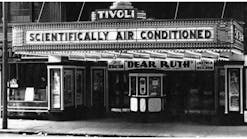Located in Destin, Fla., along Florida's northwest Gulf Coast, the Hilton Sandestin Beach Golf Resort & Spa features 600 guest suites, 32,000 sq ft of meeting space, four restaurants, four championship golf courses, 13 tennis courts, one indoor and two outdoor swimming pools, and a full-service spa, salon, and fitness center. The high heat and humidity of the region make cooling the indoor facilities critical to the success of the entire operation.
“During the peak summer months, we typically have 3,000 guests on site,” Leonard Martin, CEOE, SMA, director of engineering for the resort, said. “Keeping each of those guests cool and comfortable during their stay here is always our No. 1 priority.”
In the 20-plus years since the resort was built, the demand for cooling had grown from 650 tons over 325,000 sq ft of space to 1,200 tons over 750,000 sq ft of space. As a result, the resort's three original chiller plants no longer could provide sufficient cooling. The reliability and efficiency of the aging HVAC equipment, as well as the control system responsible for plant operation, also was an issue. To address these problems, Martin conducted a thorough analysis of the HVAC system.
“We decided that if we were going to spend money on the cooling system, we wanted to make sure we did it right so that we would no longer have problems,” Martin said.
Martin invited several vendors to submit recommendations for improving the chiller plants, ultimately choosing a plan developed by Mike Stanton, a service sales engineer for York International Corp., who suggested:
-
Replacing one 135-ton and two 200-ton air-cooled chillers with three 200-ton York Max-E water-cooled screw chillers.
-
Retrofitting two 20-year-old, 277-ton centrifugal chillers from another manufacturer with York OptiView graphic control centers and adding a York OptiSpeed electronic variable-speed drive (VSD) to the lead chiller.
-
Tying the entire HVAC system together with York's Integrated Systems Network (ISN).
Unlike the three air-cooled chillers they replaced, the three water-cooled chillers are located inside, where they are spared exposure to corrosive coastal elements. In addition to the improved reliability and longevity attributed to their location indoors, the chillers provide much-needed additional cooling capacity, as well as improved efficiencies.
Operation of the two centrifugal chillers improved with the addition of the York OptiView control centers. Designed to update and upgrade older chiller technology, OptiView provides chiller operators with a real-time, easy-to-read graphical screen that presents information in an easy-to-understand format. Graphical interfaces enable better chiller control for efficient and stable operation, resulting in reduced wear and tear of components and greater long-term reliability. Graphical trending and historical reports allow operators to optimize adjustments, schedule maintenance, and pinpoint potential problems before they cause downtime.
“The new OptiView panels allow our staff to quickly review operating status should something out of the ordinary appear,” Martin said. “It makes determining whether or not a problem exists pretty simple.”
The York OptiSpeed VSD efficiently decreases power draw in response to off-design loads and water temperatures.
“In the case of the Hilton Sandestin Resort installation,” Stanton said, “the addition of a variable-speed drive has doubled the efficiency of the chiller plant, reducing the amount of energy required to operate the chillers from approximately 0.85 kw per TR to 0.4 kw per TR.”
Installation of York ISN further improved chiller-plant efficiency. ISN is a building-automation system that monitors and instantly compensates for a multitude of changing conditions, including outdoor climate, indoor environment, occupancy level, and utilization pattern. Software capability included with the system offers remote monitoring and repair features.
“York customized their control system to show me, on one screen, all the vital elements of my cooling system,” Martin said. “They tailored their system around my facility and how our staff and our guests use the facility at any given time.”
Work on the chiller plants began in late fall 2003 and was completed shortly after the first of the following year. Six months later, the improvements were put to the test during the hot, humid Florida summer. According to Martin, complaints about the HVAC system, which once were prevalent, have ceased, and the HVAC system is operating more efficiently, with kilowatt usage down approximately 9 percent. That spells significant savings in utility costs for the resort — an estimated $375 per day.
“The project was a great success …,” Martin said. “Our guests are comfortable, and, as a bonus, the chiller plants are operating more efficiently, helping the Hilton Sandestin Resort save energy and dollars.”
For Design Solutions author guidelines, call Scott Arnold, managing editor, at 216-931-9980, or write to him at [email protected].








